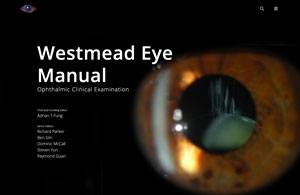34.2 Suprachoroidal Injection
The suprachoroidal space (SCS) is a potential space located between the choroid and sclera. Medications can be injected into this space, using a microneedle, to allow for targeted and sustained delivery to the posterior segment with compartmentalization from unintended tissues such as the anterior segment.[1,2,3] Because the suprachoroidal space is adjacent to target structures within the eye, namely the retina and choroid, it provides a way to optimize the therapeutic effects while minimizing secondary complications.
Hancock SE, Wan CR, Fisher NE, Andino RV, Ciulla TA. Biomechanics of suprachoroidal drug delivery: from benchtop to clinical investigation in ocular therapies. Expert Opin Drug Deliv. 2021;18(6):777-788. doi:10.1080/17425247.2021.1867532
Patel SR, Lin AS, Edelhauser HF, Prausnitz MR. Suprachoroidal drug delivery to the back of the eye using hollow microneedles. Pharm Res. 2011;28:166-176.
Patel SR, Berezovsky DE, McCarey BE, Zarnitsyn V, Edelhauser HF, Prausnitz MR. Targeted administration into the suprachoroidal space using a microneedle for drug delivery to the posterior segment of the eye. Invest Ophthalmol Vis Sci. 2012;53(8):4433-4441. Published 2012 Jul 1.
The advent of CLS-TA (Xipere; Bausch + Lomb and Clearside Biomedical) demonstrated the safe delivery of triamcinolone acetonide to the suprachoroidal space. In October 2021, it was FDA-approved for the treatment of uveitic macular edema. The PEACHTREE trial, comprising 160 patients randomized to either CLS-TA or sham, was the pivotal phase 3 trial demonstrating that 47% of subjects in the CLS-TA arm gained 15 or more letters compared to 16% in the control group with a favorable mean reduction in central subfield thickness compared to the sham group (153 vs 18 microns) (P<0.0001). Elevated intraocular pressure was seen in 11.5% of the CLS-TA group compared to 15.6% in the control group.[4] The MAGNOLIA study evaluated the time to rescue over the 48-week period and revealed the median time to rescue was 257 days compared to 55.5 days in the CLS-TA compared to the control group, respectively.[5]
There are several drugs in development aimed at targeting the suprachoroidal space. Clinical trials involving the use of tyrosine kinase inhibitors (TKIs) in the treatment of AMD are ongoing.[6]
Gene therapy and treatments for choroidal melanoma are also being investigated.[7,8]
Yeh S, Khurana RN, Shah M, et al. Efficacy and Safety of Suprachoroidal CLS-TA for Macular Edema Secondary to Noninfectious Uveitis: Phase 3 Randomized Trial. Ophthalmology. 2020;127(7):948-955.
Khurana RN, Merrill P, Yeh S, et al. Extension study of the safety and efficacy of CLS-TA for treatment of macular oedema associated with non-infectious uveitis (MAGNOLIA) [published online ahead of print, 2021 Mar 12]. Br J Ophthalmol. 2021;bjophthalmol-2020-317560.
Avery R. Two Year Results from the Subretinal RGX-314 Gene Therapy Phase 1/2a Study for the Treatment of Neovascular AMD, and an Update on Suprachoroidal Trials. American Academy of Ophthalmology Subspecialty Day; 2021, 2021; New Orleans.
Klufas M. Suprachoroidal Delivery of RGX-314 for Diabetic Retinopathy Without CI-DME: Results from the Phase II ALTITUDE™ Study. Angiogenesis, Exudation and Degeneration; 2022, 2022; Virtual.
The administration of a drug into the suprachoroidal space varies from that of an intravitreal injection. To perform the injection:
- Anesthetize the eye with subconjunctival lidocaine.
- Place an eyelid speculum.
- Cleanse the site of injection with topical betadine.
- Approach the sclera at a directly perpendicular angle, 4mm posterior to the corneoscleral limbus. The superotemporal quadrant is generally the preferred location to perform the injection.
- Create a noticeable scleral dimple at the injection site by applying pressure with the tip of the microneedle.
- When the needle has entered the sclera, use your non-dominant hand to apply light pressure on the plunger. There will be complete resistance when the needle tip is in the sclera. Once you have reached the suprachoroidal space, there will be loss of resistance, and the medication can be delivered.
- The medication should be delivered slowly, over 5-10 seconds time.
- After the injection is completed, apply pressure on the overlying injection site for approximately 5 seconds to prevent reflux.
Please see Video 34.2.1 for demonstration by Dr. James C. Major.
All rights reserved. No part of this publication which includes all images and diagrams may be reproduced, distributed, or transmitted in any form or by any means, including photocopying, recording, or other electronic or mechanical methods, without the prior written permission of the authors, except in the case of brief quotations embodied in critical reviews and certain other noncommercial uses permitted by copyright law.
Westmead Eye Manual
This invaluable open-source textbook for eye care professionals summarises the steps ophthalmologists need to perform when examining a patient.

